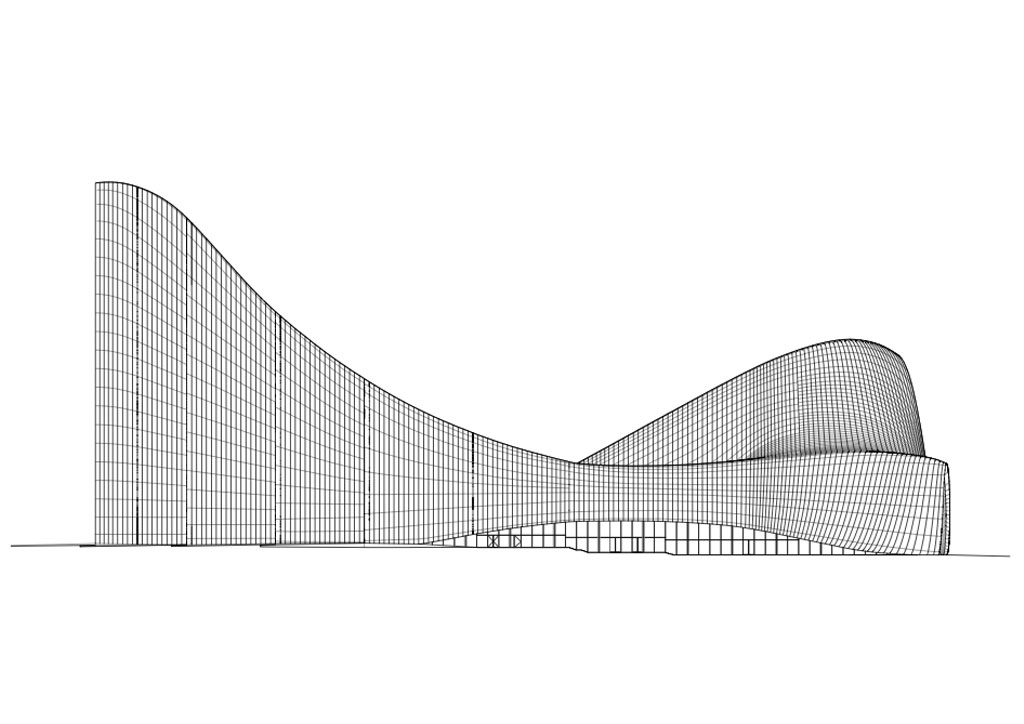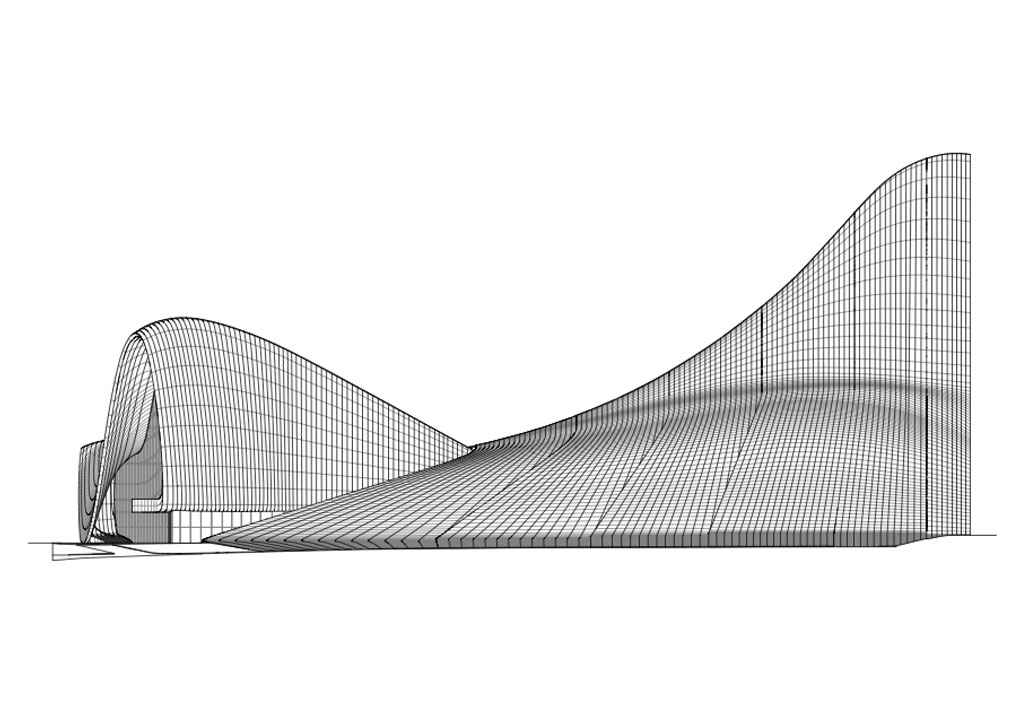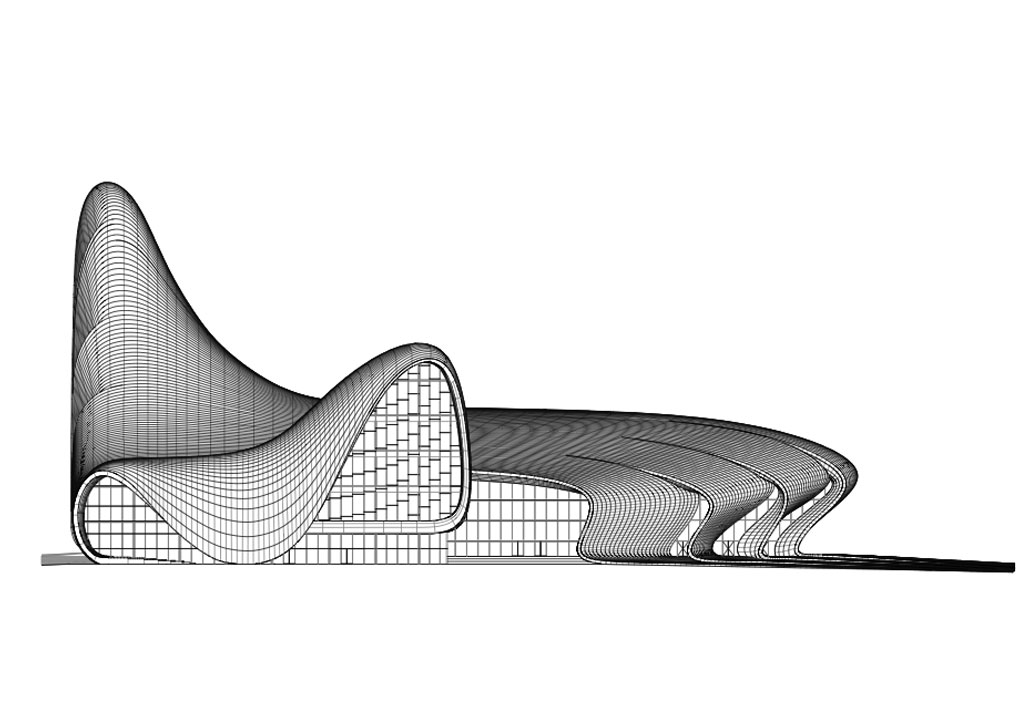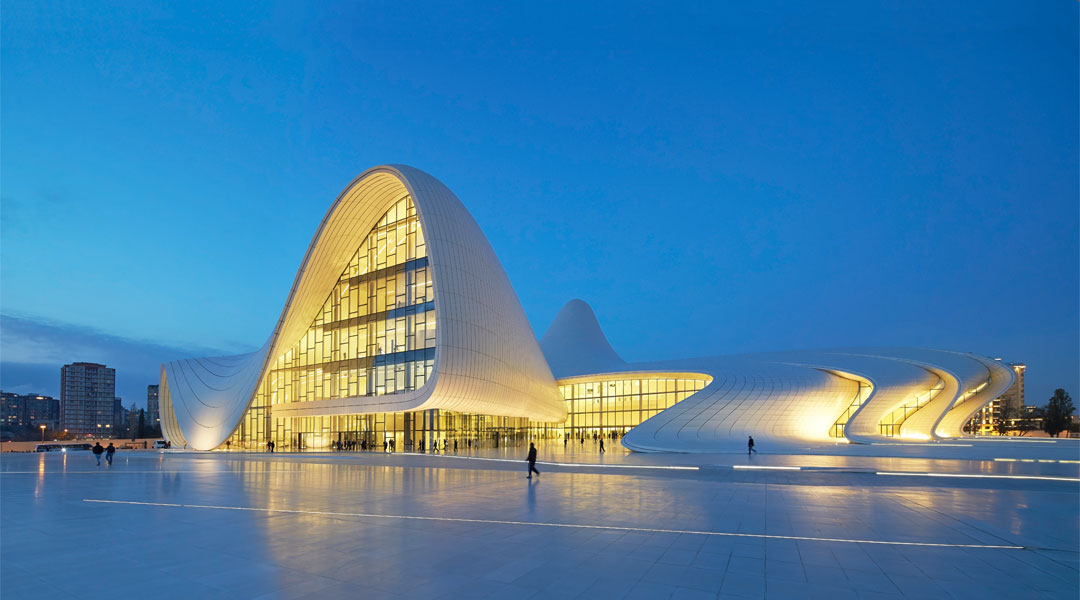
The Sensuous Heydar Aliyev Cultural Center by Zaha Hadid Architects
My first experience of a Zaha Hadid structure, the Heydar Aliyev Cultural Center in Baku, was just awesome. I saw it from afar, then close up: a great white vision like a giant flower crowning the olden Russian city that is now independent Azerbaijan’s capital, Baku. It is a monumental abstract sculpture with a sinuous and fluid shape; a gleaming organic form that emerges from the urban plaza and moves and slides and curls like a liquid white blanket over three cultural venues within.
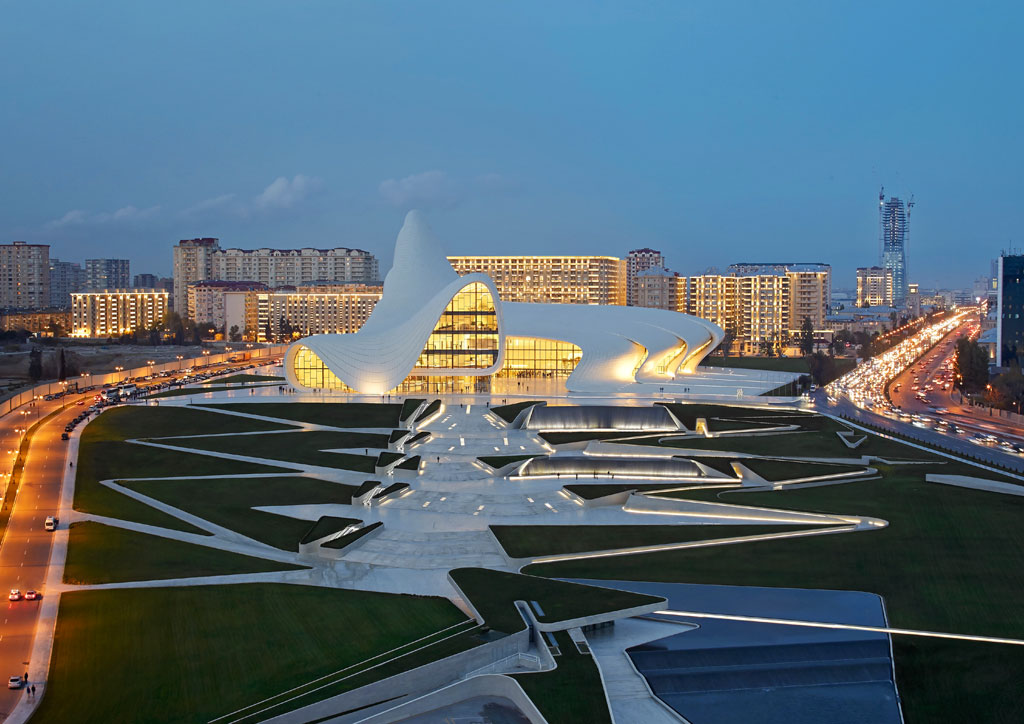
Dedicated to Azeri President Heydar Aliyev, who founded the republic in 1991, the mixed-use cultural center is the country’s primary venue for the former Soviet nation’s cultural programs, and its undulating form is a sweeping departure from the heavy and unyielding Stalinist architecture that has prevailed over Baku since the mid-1900s. HAC’s project architect Saffet Kaya Bekiroglu says the Azeris wanted “something unique, somehow showing their soft, romantic side…I see the building as like a kind of social catalyst. The design is meant to break away from the rigid Soviet style and to reflect the romance and optimism of Azerbaijan.” According to Bekiroglu, fluidity in architecture is not new to the region. “We looked to Arabic calligraphy (and) historical Islamic architecture…Islamic ornamental patterns flow from carpets to walls, walls to ceilings, ceilings to domes, establishing seamless relationships and blurring distinctions between architectural elements and the ground they inhabit.” Zaha Hadid Architects’ intention, therefore, was to relate their design to a historical understanding of Azerbaijani architecture, “not through the use of mimicry” or “a limiting adherence to the iconography of the past,” but rather, Bekiroglu says, “a firmly contemporary interpretation.”
We found our way to the 80-meter tall, 57,000-square meter Heyer Aliyev Center last May, in springtime. We flew westward to old Baku, set upon the Caspian Sea at the crossroads of Europe and Central Asia. The ADB Annual Meeting of the Board of Governors 2015 was being hosted by Azerbaijan, a newly independent, oil-rich republic seeking prestige and recognition on the global stage.

For five days we ”imbibed” the most exotic venue of the land, the creamy white organic explosion of the Heydar Aliyev Center. Three cultural venues—a conference hall, a museum, and a library—are cossetted under Zaha Hadid’s elegant freeform polyester shell. While bankers and economists mixed and merged in the most futuristic, non-linear building they had ever met in, we tripped the white fantastic in Zaha Hadid’s transformative space!
Every morning, as we walked around the curvaceous hulk, its profile transformed like a white chameleon. From the front, we noted the smooth white plaza that seemed to rise from the landscape to climb up over a glass facade, then cascade down again like a great swoop of bangs, tracing an infinity curve over the front entrance. From behind, a giant white wave swept around to the front and curled under like a wide mass of surf as it touched the shore of the plaza. The fluid sculpture ebbed away, down the gentle slope of landscape; meandered down the front plateau, passing giant colored snail figures and ending in a coffee shop reflecting in the water pool.
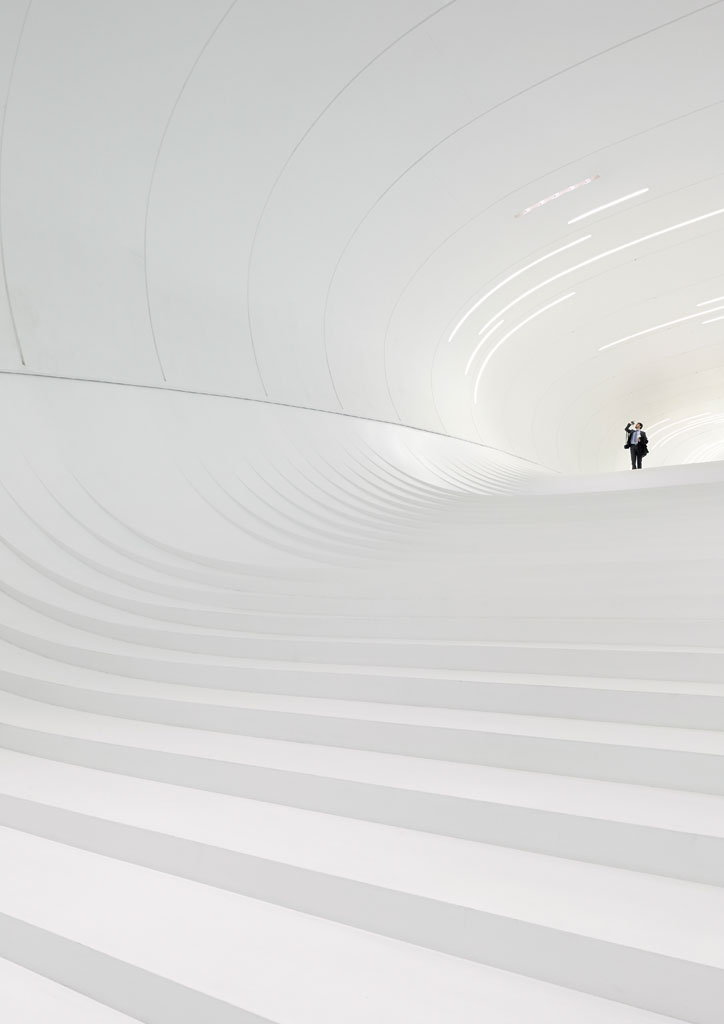
Inside the Center, one tastes the full, ethereal experience. We stepped into a 74-meter high atrium of white space with natural light illuminating the air and fine lines of fiber optic light etching the curved walls and ceilings. It feels like a cavernous cruise ship, a grand ballroom, a wondrous theater setting, or a slice of heaven, depending on where one’s gaze settles. We had cocktails in the sunken lounge-area among curvy settings and hanging white lamps, designed by the Italian firm, Symmetrico.
One free afternoon, we took a guided tour to discover the more discrete spaces of the HAC center’s massive interior. First, the modern art galleries, tucked among the four upper layers that resemble a cruise ship. Then we walked through the history museum devoted to Azerbaijan’s founding father and the HAC’s namesake, who passed away in 2003. The designer-curated museum comprised three levels of interactive exhibits and hundreds of photos, films, and stories interpreted on cutting-edge media—an impressive monument to Heydar Aliyev. We visited too the large conference hall, where 1,000 participants can gather with high-tech facilities. The Center’s magnificent auditorium is a stunning symphony of curved oak wood from ceiling to floor. Graceful wooden ribs embrace the entire auditorium like a giant clamshell. The HAC library displays models of the outstanding architecture of the capital city Baku, while the far end of the center contains nine floors for the working offices of HAC staff.
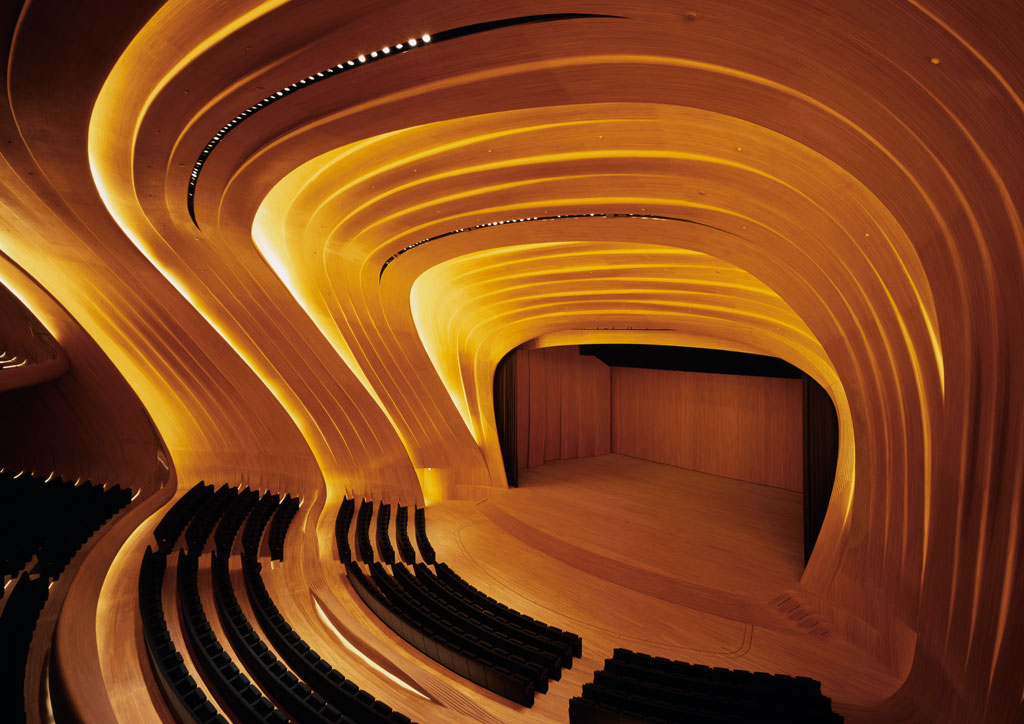
Mostly, we savored the sublime experience of the all-white space: stopping on a rounded passageway and gazing down into a white abyss. Or standing on the expansive ground floor and looking up into smooth, curved halls with angle-free ceilings. Or tiptoeing up a cantilevered white staircase upon wide, delicate steps that merge smoothly with the side walls—like a wave of surf curling over us! It took gingerly treading to alight to the next level, as visible handrails and traditional cues are not part of the program.
The virtuosity of the HAC’s design holds its viewers spellbound. Mundane matters such as gravity seem not to hold sway inside this space devoid of columns, beams and other visible means of support. As New York Times critic Joseph Giovannini put it: “To be wonderful, a wonderland cannot look strained…The purity of an all-white space would be immediately compromised by visible ducts, grills and knobs: the architects suppress pesky constructive bumps in support of smooth, clean surfaces that defer to the effect of a weightless shell floating in space. Had Hadid revealed the nuts and bolts, she would have lost the flying-carpet effect of a magically supported structure.”
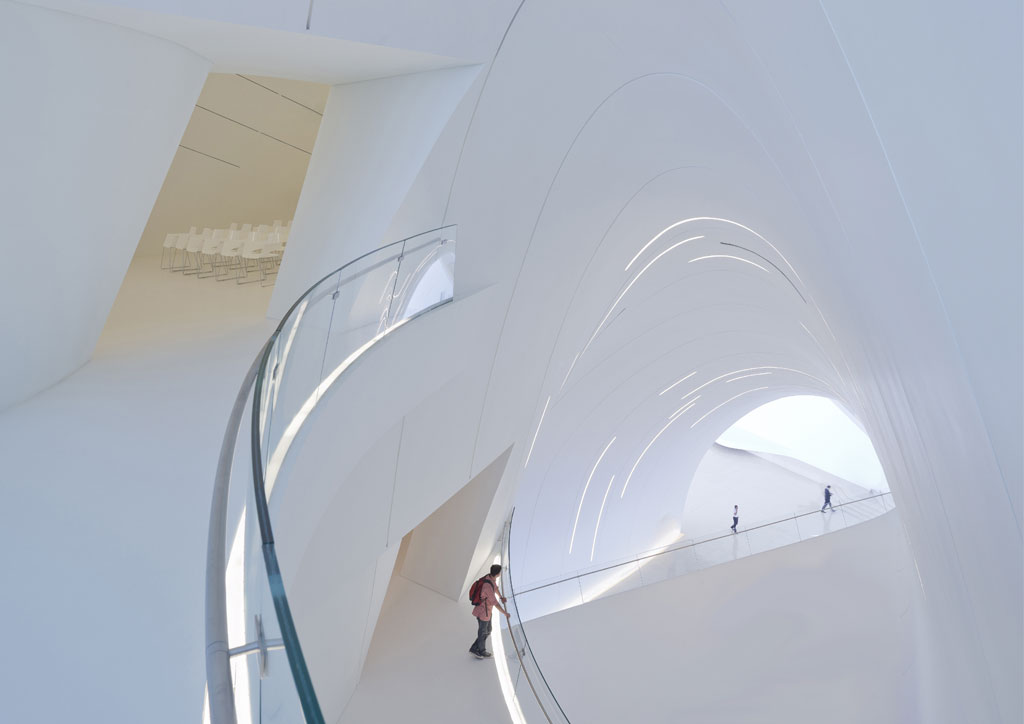
The Heydar Aliyev Center honors Azerbaijan’s cause of romance and optimism, and of transformation and upliftment, while projecting an ambitious and amazing face to the world. It does not grasp at the sky, but lightly skims the ground. It does not radiate power and might, but sensuousness and inclusiveness. It inspires awe without fear. It is an anti-monumental monument. ![]()
This article first appeared in BluPrint Vol 4 2015. Edits were made for Bluprint.ph.
